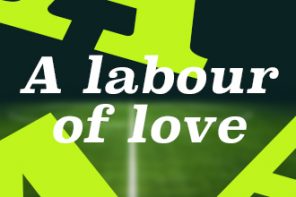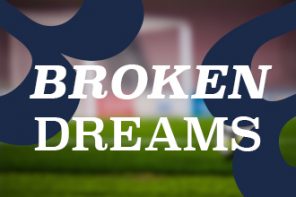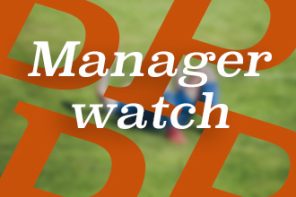’90s Heroes is a series by Adam Hurrey on the Bet Bright football blog which looks back on the legends of the game in what now seems a simpler time for football.
Duncan Ferguson; Jurgen Klinsmann; Faustino Asprilla; Juninho; Tony Yeboah; Georgi Kinkladze; David Ginola; Chris Waddle; Gianfranco Zola; Niall Quinn and Kevin Phillips.
“Big? It isn’t big. It’s magnificent! I’ve seen some whoppers in my time, but Dion’s is something else.”
One assumes there was more to this in-demand 23-year-old that impressed Alex Ferguson enough to spend a million pounds just a week before the first Premier League season began. What eventually turned out to be Manchester United’s unfortunate loss became the mid-table Midlands’ gain, but there is nothing mediocre nor run-of-the mill about Dion Dublin.
In a more footballing sense, Dublin’s size hasn’t been everything. At first, though, the 6ft 2in converted centre-half found himself in the best possible place for a big man: John Beck’s Cambridge United side of the early 1990s. Thanks to their relentlessly effective long-ball game (and the variety of infamous discomforts laid on by Beck for visiting teams) Cambridge rocketed up the divisions to come within a whisker of the inaugural Premier League.
Dublin – top scorer in each of those three seasons – gave Ferguson a glimpse of what he could do in a Rumbelows Cup tie at the Abbey Stadium in 1991:
Beck pushed through the deal by sending Ferguson a video compilation of Dublin’s exploits and, with United in need of a new face up front, a dream move was signed and sealed.
“He said Manchester United wanted me to go up there for talks,” recalled Dublin to the Times last year. “There was a 30-second silence, as I thought they must have got the wrong player. Moving from one of the smallest clubs in the world to one of the biggest was absolutely incredible, and I don’t think it would happen now.”
“I was sat in the changing rooms between Bryan Robson and Peter Schmeichel thinking, ‘Really, am I in this dressing room? On my first day at United I took my own socks to training, but they were already there on a peg for me. At the end of the session I was picking my kit up off the floor to wash, and couldn’t believe it when I was told someone else would do it for me. At Cambridge we had to drive home in our muddy kit.”
An 89th-minute winner against Southampton opened Dublin’s account in a red shirt only for a broken leg to bring him back to earth with a bump. His replacement, Eric Cantona, arrived weeks later and immediately started laying the foundations to become a club legend – Dublin, upon his return to fitness, was limited to occasional contributions from the bench.
Shortly after the start of the 1994/95 season, a 25-year-old Dublin – despite Ferguson’s reluctance – wanted regular football. An earlier deal with Everton had fallen through, so it was Coventry City who paid £2m to take him to Highfield Road to complement the freewheeling Peter Ndlovu. Eight goals in ten games was the ideal start, and Dublin finished as the Sky Blues’ top scorer as they completed their seemingly annual flirtation with relegation.
Another barnstorming run in 1995/96 – 11 goals in 14 games – demonstrated precisely what Dublin was all about. As his physique demanded, he was a predominantly penalty-area force (only Alan Shearer and Peter Crouch have scored more with their head in the Premier League) but a rather more crafty and opportunistic one than other British battering rams of the time.
He led the Coventry scoring charts again in 1996/97, with crucial goals in April and May helping Gordon Strachan’s side pull off a miraculous escape act and, in turn, force a 28-year-old Dublin into the frame for an England call-up for the first time.
23 goals in 1997/98 attracted the attention and the chequebooks: by January, Dublin had turned down a new Coventry contract to the dismay of the fans, one of whom waved a ten-pound note at their captain and totem before a nerveless penalty past Arsenal’s David Seaman at Highfield Road.
Dublin wasn’t all about the money – turning down lucrative moves to Blackburn and Leeds because he didn’t want to uproot his family from the West Midlands – and could certainly claim to have left the Coventry faithful with some fond memories, including some sheer cheek against Newcastle’s Shay Given, “the only Irishman who doesn’t know where Dublin is”:
Dublin was now at his peak – oblivious to his Coventry boo-boys – and Glenn Hoddle couldn’t ignore him any longer. The latter half of the 1990s was a boom time for the English striker: a glut of goalscorers of all types were knocking on the door to partner or at least deputise for Shearer.
Against Chile at Wembley, three months before his 1998 World Cup squad would be finalised, Hoddle gave debuts to a promising-looking alternative strikeforce who would soon share the Premier League Golden Boot. In a 2-0 defeat, however, both Dublin and an 18-year-old Michael Owen were overshadowed by the immaculate Marcelo Salas.
Having seen off the competition of Chris Sutton, Andy Cole and Matt Le Tissier, plus the injury-hit Ian Wright and Robbie Fowler, Dublin’s different dimension still found itself behind Shearer, Owen, Teddy Sheringham and Les Ferdinand in the pecking order. For once, the big man’s timing couldn’t have been worse.
Dublin took the bad news well – his La Manga hotel room remaining intact – but any lingering frustration would be taken out on two World Cup winners in the opening weekend of the 1998/99 campaign. Frank Leboeuf will have known what to expect – Dublin had belted a hat-trick past him on the same day of the previous season – but he’d obviously failed to give his A-list new Chelsea teammate adequate warning.
Marcel Desailly – a man whose AC Milan pocket had intermittently been home to Baggio, Batistuta and Bierhoff in the mid-1990s – was now being given a warm welcome to the Premier League by Darren Huckerby, Noel Whelan and Dion Dublin. Serie A suddenly felt a million miles away, as Desailly told the Guardian recently:
“I suffered. My ego got smashed. Playing against Dion Dublin, Duncan Ferguson – big guys. The flick, the fighting spirit. Playing against Coventry, Sunderland – the long ball. I was unable to intimidate them. In France and Italy I was a strong guy – I would look the strikers in the eye and show ‘there is nothing for you today’ – and the player would look down and accept that I had won. But in England, no. The guy is ready for a fight. The striker will tackle you! I was depressed for four months.”
That continuing dominance of Premier League defences finally secured Dublin the move he wanted: a £5.75m switch to Aston Villa to form a formidable-looking partnership with Stan Collymore.
Once again, Dublin’s impact was instant – seven goals in three games – and Villa were top of the table at the turn of the year, only to be overwhelmed by the title-race regulars. Defining moments in a Villa shirt were fewer and farther between than before, but still managed to display Dublin’s full repertoire. His penchant for the spectacular manifested itself in a stunning volley at White Hart Lane:
Dublin’s typically fearless approach earned him the second serious injury of his career. An accidental clash with Sheffield Wednesday’s Gerald Sibon looked the dictionary definition of innocuous, but left the 30-year-old millimetres from being in a wheelchair.
“The doctor insisted that the ambulance went no faster than 30 mph, and later he told me that any bumps could have moved my neck half an inch and I would have been paralysed. I went straight into intensive care. Then the surgeon came in with his diagnosis. He’s quite a confident man, bordering on arrogant because he’s so good at his job. He waltzed in and said: “Right Dion, you’ve broken your neck.”‘
All things considered, then – the eye for goal, the engaging personality, the titanium plate holding his vertebrae together – it could be considered a shame that Dublin’s final, and abiding, Premier League memory would be an act of on-pitch violence. Fortunately, though, the victim of his scything challenge (glorious) and subsequent headbutt (amusing) was the eminently scythable and headbuttable Robbie Savage.
A profuse apology followed – “I am ashamed of what I have done. Where it came from, I just don’t know” – and Dublin’s reputation remained slightly more intact than Savage’s face. Football, undoubtedly, was the winner.
The Dion Dublin legacy needs closer inspection to reveal its true value beyond just a meteoric rise through the divisions and a few seasons of top-flight goal-plundering. After all, how many former England strikers can boast 1) inventing their own musical instrument and 2) making the step up (across, down, whatever) to the pleasant wilderness of midweek daytime television?
234 goals, the flooring of Robbie Savage and the ability to find you three bedrooms plus off-street parking: Dion Dublin unquestionably knows how to use his head.
For the next instalment of ’90s Heroes, check out the Bet Bright football blog on Friday.
It's the 90's Heroes all in one place….
Now with added Dion Dublin!!
⚡️ “BETBRIGHT – 90's HEROES” by @BetBrighthttps://t.co/v2KhJxjqn9
— BetBright (@BetBright) October 16, 2016






